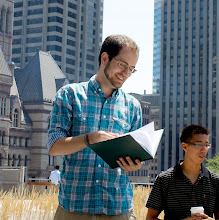Young people painting green into their art

Young people painting green into their art
Music, poetry, dance, theatre. The arts have been a falling priority in modern society, or so it would appear. Though they make up a great part of our culture, people often put art aside and choose areas that provide easier paths to economic successes. This has been particularly true in formal, public education where arts funding has been cut dramatically and curriculum streamlined in favour of other subjects.
An art-supportive educator/administrator from
Most of the public generally accepts the value of the arts as a contribution to culture. We therefore fund them through government contributions to various programs (and in the Untied States, through large philanthropic donations). This helps give a good start to those who provide these cultural benefits. Many give back to society with artistic presentations that don’t just tug our hearts and make us laugh, but raise important issues or provide social critiques.
Music has a history of raising social causes. Artists throughout the last century have been doing so through folk and other traditions and have sung about environmental problems since the 1960s. Youth have been on the forefront of this movement. Young people care about the state of the earth and the implications of what we are doing. This comes through when musicians like Sarah Harmer sing about the problems they see.
At the Hillside Festival in
Lyrics in her song, Escarpment Blues, include: “if they blow a hole in the backbone, the one that runs across the muscles of the land, well we might get a load of stone for the road, but I don’t know how much longer we can stand.”
Local activists there have done good work, challenging government science and having the Ministry of Natural Resources reexamine the ecological functions and species of wetlands in the area, which have been upgraded to “provincially significant”. Harmer’s music helps popularize the issues.
“I’m trying to do my bit,” she remarked.
A friend and math student, Rob Blom and fellow traveller Ayden Sherrit hiked the whole Escarpment from the
The
The artists, organizers and participants at
Young musicians from all genres are telling sounding alarm bells, from the local punk band talking about sustainable agriculture and veganism (one band in Sarnia is called Chemical Valley Mutants), to the established rockers dealing with fair trade and HIV/AIDS. Young people care, and it’s the responsibility of all of us to listen. And to support the arts.
To learn more about the Niagara Escarpment or donate to the
Darcy Higgins is a native of

